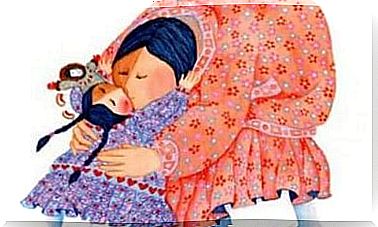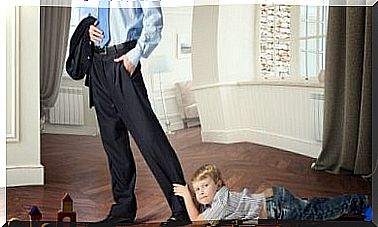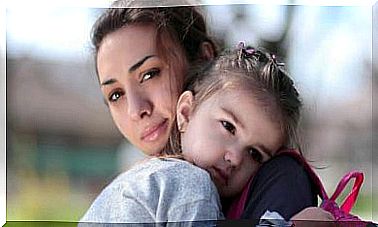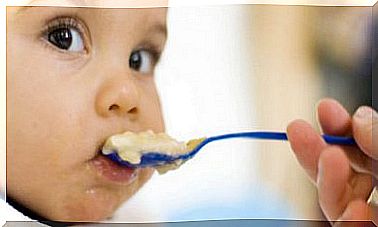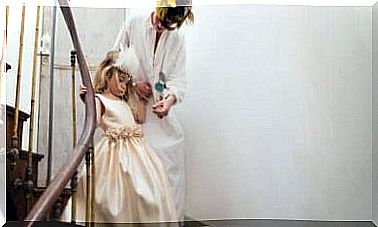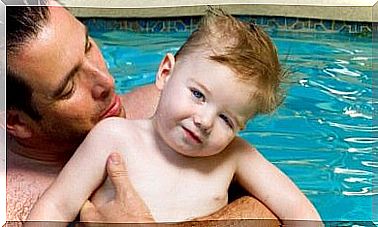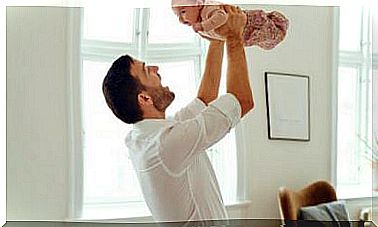Galant’s Spinal Reflex: How Does It Manifest Itself?
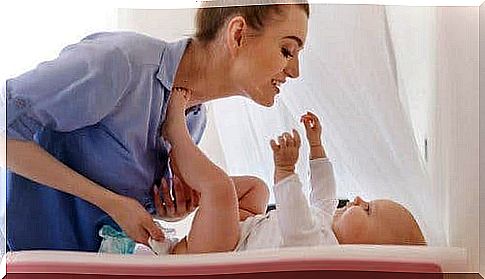
As the baby grows, he may experience different reflections in his body, actually more than we know. The spinal Galant reflex, also known as the trunk bending reflex, is one example.
It generally disappears around the completion of the first year of life. It is a muscular reaction and occurs automatically as a response to a stimulus.
What triggers the Galant spinal reflex?
In order for the spinal Galant reflex to occur, the infant must be stimulated. To do this, you will have to make the baby lie on his stomach on his hand and swipe the finger on both sides of his spine (from the shoulder to the buttocks), first on one side and then on the other.
The child will respond immediately to this stimulus by curving the spine towards the side being stimulated. As mentioned, this reflex must disappear before the baby is one year old.
The main function of the spinal Galant reflex is to develop the vestibular sense and help the baby pass through the birth canal. If he is active after the first year of life, however, any rubbing at the level of the lower back will cause the baby to turn in the direction from which the stimulus is coming.
On the other hand, it can cause various problems with regards to sphincter control and will prevent the child from sitting and still in a chair for some time.

Signs that the Galant spinal reflex is not present
If the reflex in question is not present, the child may suffer from hypersensitivity in the back, consequently he will not tolerate clothing that is very close to the body.
In general, everything that comes into contact with the waist area will annoy him and he will prefer the most comfortable clothes. This discomfort can even cause difficulty concentrating or paying attention to any activity that requires sitting. On top of that, it can result in poor short-term memory.
Among the inconveniences this condition can cause are hand-eye coordination problems, clumsiness in the lower body, back pain as an adult, and it also appears to be one of the causes of nocturnal incontinence in children over the age of 5.
Other secondary reflexes of the newborn
- Moro reflex: you have to lay the baby on a soft surface, support it and gently pull it from the wrists, separating them slightly, and then let it fall backwards, always slowly. The child will react by spreading his arms and bringing them forward, as if he wants to give a hug. After that, she will start crying. Typically this reflex persists up to four months of life.
- Parachute reflex: in order to perceive this reflex, you have to grasp the baby, in the prone position, by the hips and then tilt it forward. In the presence of this stimulus, the child will react by spreading his arms and hands. It usually appears around six months and disappears once it is nine months old.
- Automatic gear reflex: when we lift the baby who is lying on his stomach, we hold him from under the armpits and try to put him on his feet. The child will thus begin to perform movements as if he were taking his first steps. If we put it on a solid foundation, it will try to move forward little by little. Thus begins the process by which the baby will learn to walk.
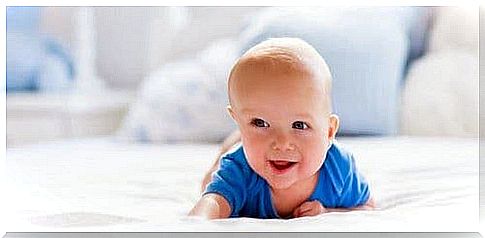
But they are not the only ones …
- Landau reflex : When the baby is lying on his stomach, in the ventral position, his trunk hardens, the head lifts and the feet and arms stretch instinctively. Under normal conditions this reflex appears around the fourth month and disappears in the tenth month.
- Drag reflex: in order for the baby to react to this reflex, he must be placed on his stomach; he will then try to move his legs to start crawling. We can help him by putting our thumbs under his feet so that they act as a support. This reflex should appear around three months of age.
- Research reflex : when we caress or touch his lips, the baby turns his head and opens his mouth in search of the direction of the contact received. Developing this reflex helps the baby to search for the breast or bottle. It is possible to notice this from the first month of life.
- Crawling : we must have the baby lie down on the tummy, on a solid base that we consider safe. The little one will react immediately and adopt the position to crawl. This reflex occurs around the sixth or seventh month and is maintained until the baby learns to walk.
As we have seen, babies experience different reflexes from birth until their first birthday. We need to pay attention to each of them and notice if they occur in the corresponding time frame.
If you notice that one or more of these stimuli occur outside the period considered normal, consult your pediatrician who will be able to formulate an adequate diagnosis and resolve all your doubts.
